
About Andrew Cusack
 Writer, web designer, etc.; born in New York; educated in Argentina, Scotland, and South Africa; now based in London.
Writer, web designer, etc.; born in New York; educated in Argentina, Scotland, and South Africa; now based in London. read more
News
Blogs
Reviews & Periodicals
Arts & Design
World
France
Mitteleuropa
Knickerbockers
Argentina
The Levant
Africa
Cape of Good Hope
Netherlands
Scandinavia
Québec
India
Muscovy
Germany
Academica
Recent Floridian Architecture
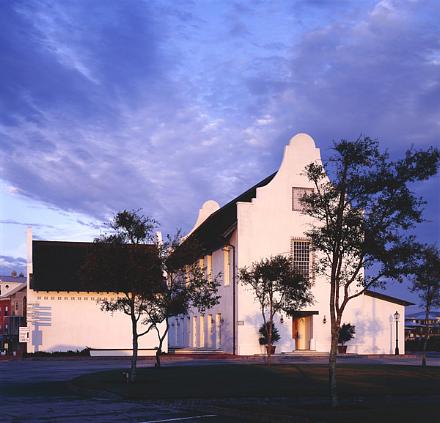
One of the unfortunate factors about places like New York which have been settled for hundreds of years is that they are generally over-developed. This leaves little land for new developments, and likewise for large-scale semi-planned communities like the ones currently being built in Florida. While much, perhaps even most, of Florida’s booming development in the late 20th century suffered from severe architectural defects, a number of outstanding works have bucked the trend.
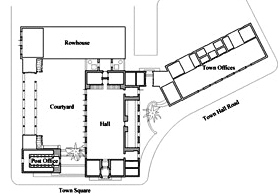 Rosemary Beach is one such development. The Town Hall, seen above, was designed by the firm of Merrill, Pastor, & Colgan. This, and other buildings in Rosemary Beach, follow a St.-Augustine-esque Spanish Colonial style, with wooden balconies, and a few Cape Dutch elements, as with the gables of the Town Hall. What’s more, most of these buildings are designed to take advantage of natural cooling methods to cut down on energy consumption, as well as being built to high standards of hurricane resistance. Below are a series of photos from Rosemary Beach and other places demonstrating some of the better trends in recent Floridian architecture, both public and domestic.
Rosemary Beach is one such development. The Town Hall, seen above, was designed by the firm of Merrill, Pastor, & Colgan. This, and other buildings in Rosemary Beach, follow a St.-Augustine-esque Spanish Colonial style, with wooden balconies, and a few Cape Dutch elements, as with the gables of the Town Hall. What’s more, most of these buildings are designed to take advantage of natural cooling methods to cut down on energy consumption, as well as being built to high standards of hurricane resistance. Below are a series of photos from Rosemary Beach and other places demonstrating some of the better trends in recent Floridian architecture, both public and domestic.
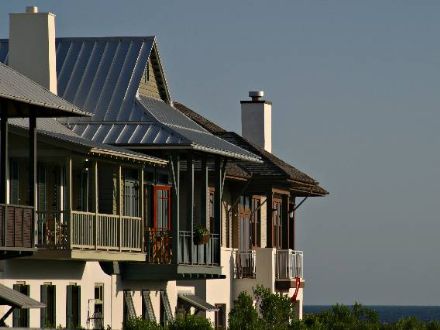
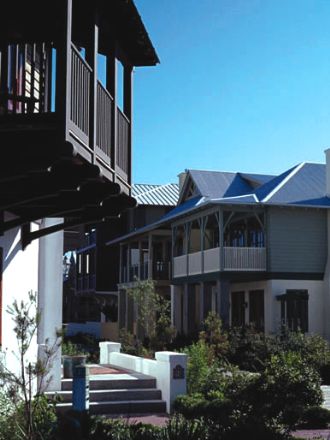
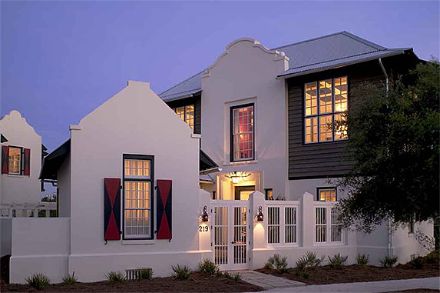
The Watson house, above and below.
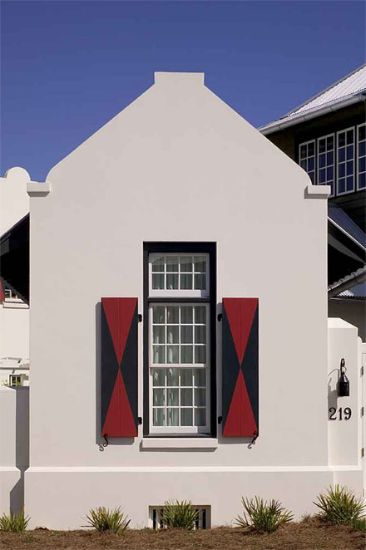
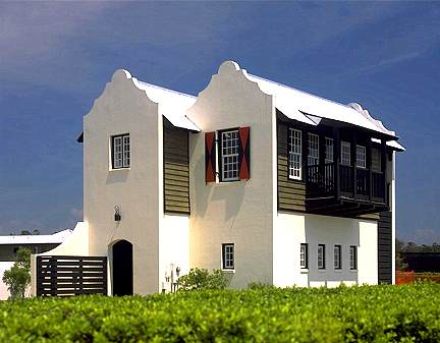
The Watson guest house.
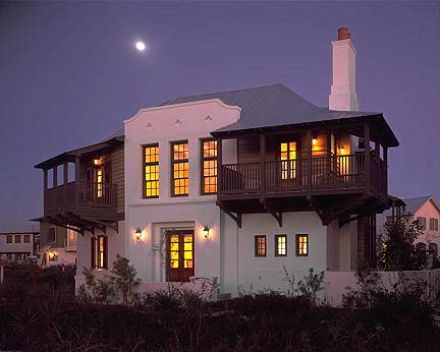
The Brand house, above and below.
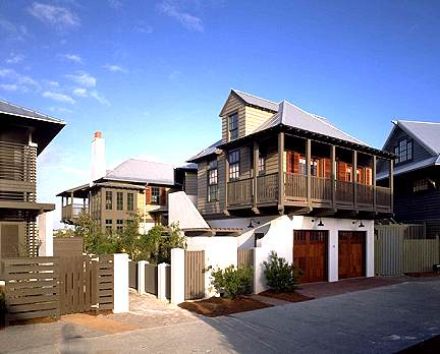
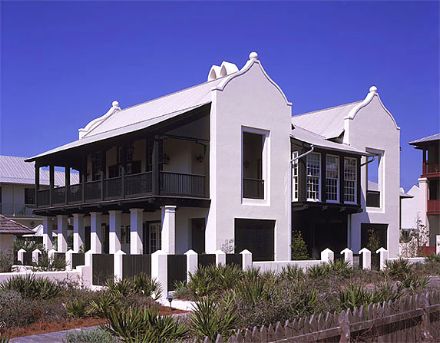
The Malugen house.
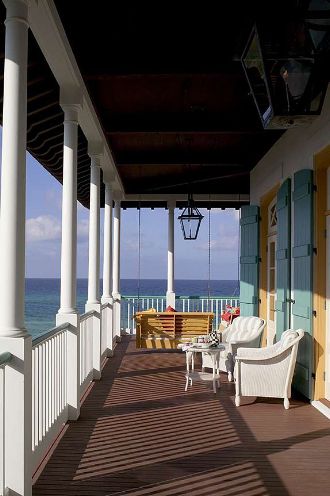
The Apel house.
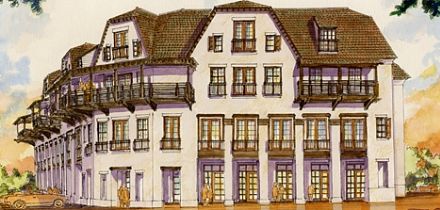
The Mercado, a commercial building planned for Rosemary Beach.
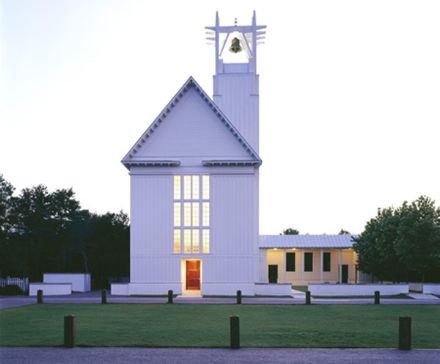
While the town of Seaside has received much criticism as well as praise, the non-denominational chapel for the use of the whole community is of note. Overall it is a pretty building, but suffers from a few deficiencies. While the belltower is an admirable example of modern traditional style, the pitch of the roof is too steep. Also, the complete absence of iconography owing to its non-denominationalism gives it a somewhat empty feel. A proper stone altar, a rood cross, and a few saints would make it feel more welcoming and more churchly.
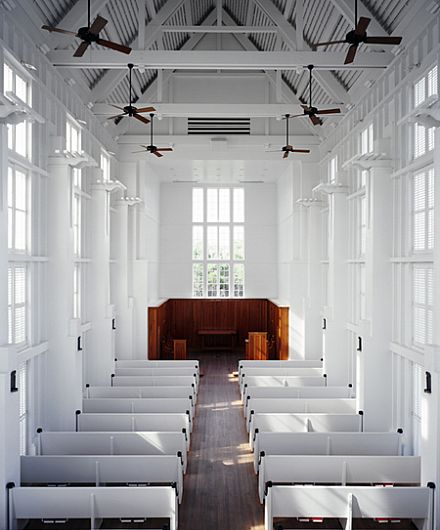
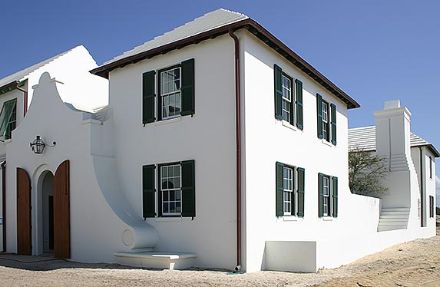
Elsewhere in Florida, the town of Alys Beach also employs elements of the Cape Dutch style. The white sands of Florida’s Panhandle are apparently due to quartz crystals from the Appalachians being washed down to the Gulf of Mexico centuries and centuries ago.
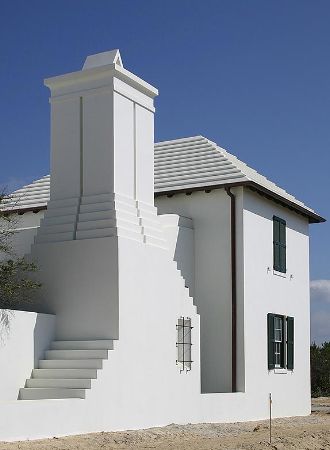
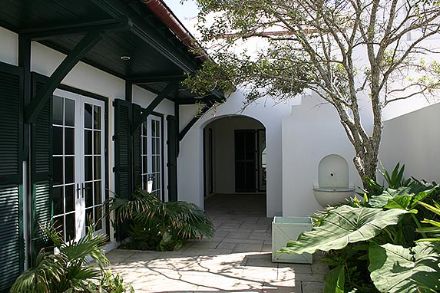
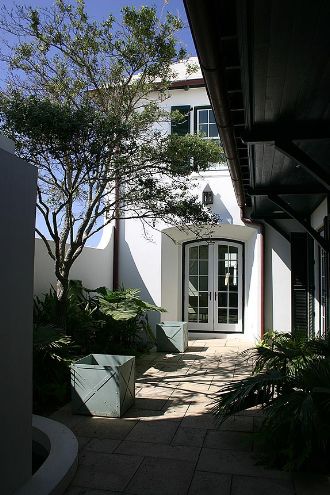
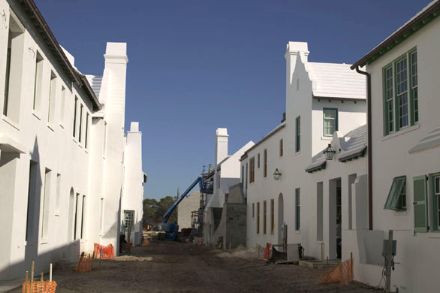
A street still under construction in Alys Beach.
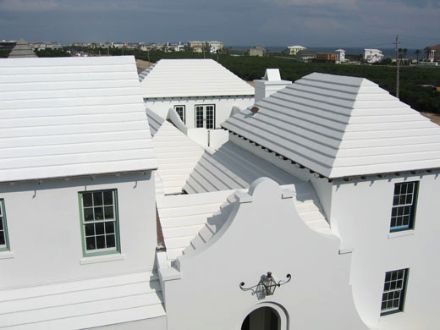
Search
Instagram: @andcusack
Click here for my Instagram photos.Most Recent Posts
- In the Courts of the Lord February 13, 2025
- American Exuberant February 10, 2025
- Crux Alba Journal Launch February 10, 2025
- The Year in Film: 2024 February 10, 2025
- Articles of Note: 27 January 2025 January 27, 2025
Most Recent Comments
- on When an American aristocrat meets a European Grand Duke
- on The Year in Film: 2024
- on Jesuit Gothic
- on The Borough Synagogue
- on No. 82, Eaton Square
- on Christ Church
- on The Last Will and Testament of Louis XVI
- on Amsterdam
- on Season’s Greetings from the Seventh
- on Season’s Greetings from the Seventh
Book Wishlist
Monthly Archives
Categories



The chapel does seem a bit bare. It ought to be dolled up a bit. And while they’re at it, the locals ought all to convert to Catholicism, too.
yes less the church have no real signifigance
http://spaces.msn.com/liturgicaldisorder/
Andrew,
This is similar to New Town – Saint Charles, being built in suburban Saint Louis, Missouri—on the floodplain of the huge and dangerous Missouri River. Oh, I’m sure they have the best of engineering to protect these fine new homes.
This community will also have a non-denominational chapel in its center. In the United States, the term ‘non-denominational’ has notional overtones that go from benign to sinister—in middle of the last century, the Ku Klux Klan was the major force in the non-denom movement. Nowadays we have both left- and right-wing versions of ’emerging churches’ that are quite un-Catholic in their Christianity, but are wildly popular: these non-denom ecclesial communites are instead explicitly Post-modern.
The New Urbanism theory inspiring these new towns fails to recognize the Catholic roots of urban design and instead is based on Existentialism. I like these new communities better than the standard tract developments, but I am more comfortable with the Catholic parish neighborhoods of the City of Saint Louis.
It’s a good start, but we can do better, I think.
Best regards,
Mark S. Abeln